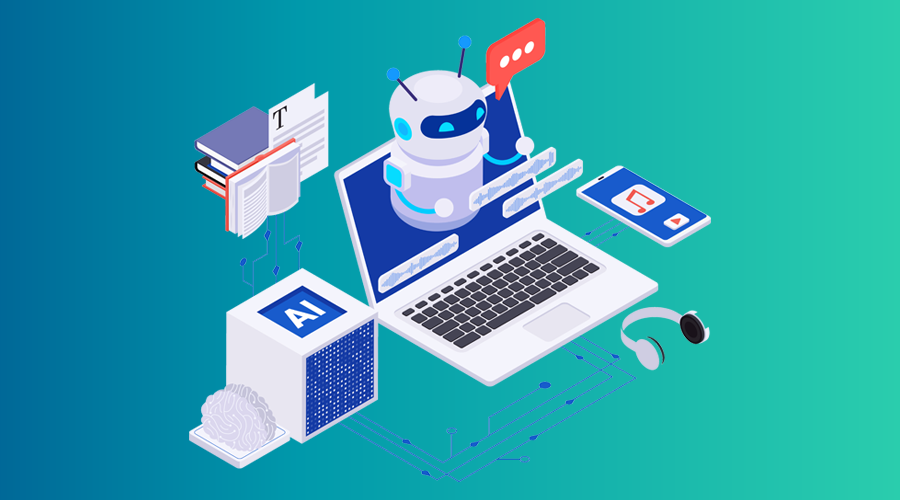Evolution of AI Over Time:
More recently, the TechCrunch Disrupt 2023 event highlighted the significant impact of AI on all media-related industries, including consumer applications and content creation. Discussions focused on generative AI and automated tools that have become ubiquitous in the media, from video editing to article writing. The widespread application of these technologies illustrates a complete transformation in content creation and distribution, while also raising questions about the accompanying legal, ethical, and practical challenges. This usage further demonstrates the profound impact of AI in media and TV advertising.
Key Technologies and Their Impact on Media

In 2023, the use of artificial intelligence in the media in the United States reached a new milestone. Tools now allow for the replacement of actors with CGI (Computer Generated Imagery) models. Wonder Dynamics, a startup specializing in AI tools, developed Wonder Studio. This software detects actors with a single camera and replaces them with CGI characters. Using machine learning algorithms, the program creates a digital replica of the actor and seamlessly integrates it into the scene. This clearly demonstrates the impact of AI in media in terms of technology and production.
A simplification and optimization of production
This technology greatly simplifies the replacement of actors with CGI. Creators can make this change by simply dragging and dropping the generated character into the original shot. This eliminates the need for time-consuming reshoots or complex motion capture equipment. It can also replace actors in scenes that have already been filmed. This reduces production costs and allows for later modifications.
Some companies aim to provide AI-based editing tools to improve the quality and efficiency of creators’ work. These tools make advanced technologies more accessible to them.
Beyond films and television, this technology holds promising applications in television advertising. It allows for easier modification of ads, making adjustments and improvements quicker and less costly. Additionally, with AI-based editing tools, advertisers can perform A/B testing more effectively. They can vary versions of the same ad to analyze and optimize their impact on different audiences. This ability to quickly test and adjust advertisements allows for the optimization of marketing messages. It also enables faster responses to market trends and consumer feedback.
Today, many startups are venturing into AI, offering immense potential for various creative sectors, including television advertising. They make the processes of creation and optimization smoother and more accessible. They also free creators from technical constraints, allowing them to focus fully on innovation and creativity.
Concretely…
The Washington Post also uses AI with its tool Heliograf. This writing robot is designed to automate the creation of articles on repetitive topics and local events, allowing human journalists to devote more time to complex subjects. According to an article in MIT Technology Review, these algorithms quickly and accurately create narratives, facilitating content creation. Heliograf can rapidly gather and process factual information to automatically produce articles, enabling media outlets to more efficiently cover a large number of events in real-time.
Tools like Heliograf could revolutionize TV advertising by automating the creation of advertising content. AI could quickly generate scripts for commercials, allowing for easy testing of different versions and optimization of marketing messages. This automation speeds up the production and adjustment of advertising campaigns, reducing costs and timeframes. Additionally, by analyzing data in real-time, AI can adapt advertisements to market trends and consumer preferences, enhancing the effectiveness and impact of advertising campaigns.
By combining recommendation algorithms and writing robots, media companies can enrich the user experience while increasing their productivity, thereby strengthening their position in the digital media landscape.
The Challenges and Controversies of Generative AI
Since the advent of generative artificial intelligence, the media landscape, particularly TV advertising, has undergone a radical transformation. Tools like Heliograf now enable the massive production of content, posing a major challenge to the TV advertising sector, which must adapt to this new reality.
In an exclusive interview, Estelle Prusker Deneuville, a professor at Audencia and a media specialist, addresses several key aspects of the impact of generative AI on TV advertising and media. AI offers an opportunity to save time for creatives by assisting with tasks such as script creation, video editing, and the adaptation of advertising content. However, it also raises questions about copyright, the accuracy of information, and the unauthorized use of content.
Copyright and Accuracy: Crucial Issues
Media organizations must find ways to differentiate content created by humans from that generated by machines. Copyright limits become blurred when AI generates content based on existing works, posing significant legal challenges. Additionally, the increased automation of advertising processes could have significant repercussions on employment, with certain creative and technical roles potentially being replaced by algorithms. Despite these challenges, the impact of AI in media and TV advertising represents an opportunity for reinvention.
Opportunities of Generative AI
Despite these challenges, generative AI represents an opportunity for TV advertising to reinvent itself. Media companies could explore new business models, such as mass personalization of ads and real-time optimization of advertising campaigns through data analysis. AI also facilitates more effective A/B testing, allowing marketing messages to be optimized for different audiences quickly and accurately.
In sum, the impact of generative AI on TV advertising is complex, but it also offers possibilities for progress and innovation in the sector. Media organizations must navigate carefully between technological advantages and ethical and legal implications to maximize benefits while minimizing risks.
What About the Future?

The future of AI in media is a complex combination of opportunities and challenges. Trends and innovations are already altering the current media landscape. According to an article from the Reuters Institute, new AI-based technologies, such as smart speakers, smart glasses, and virtual reality (VR) headsets, are expected to revolutionize how users interact with content. These devices facilitate more personalized and immersive experiences.
Moreover, a study by MDPI Journal highlights that the growing use of subfields such as machine learning and natural language processing will allow media to automate tasks like content creation and analysis. Additionally, technologies like computer vision and scheduling optimization are also being explored, offering innovative ways to produce and distribute content.
In this transformation, Veritone notes that AI will also play a key role in content curation, making information more responsive to users’ specific preferences and interests.

